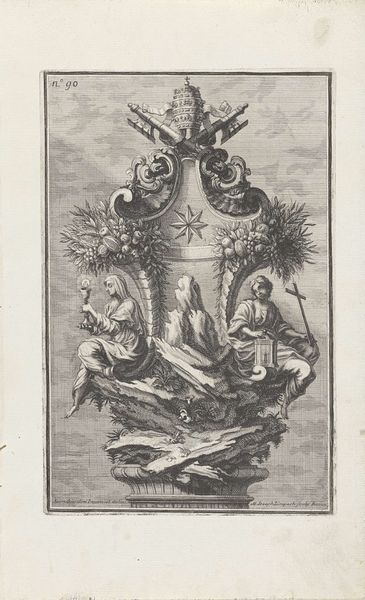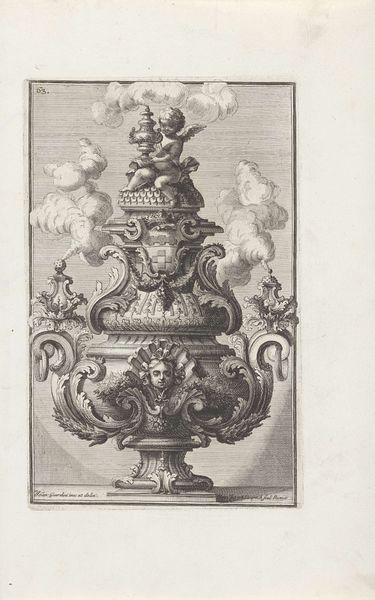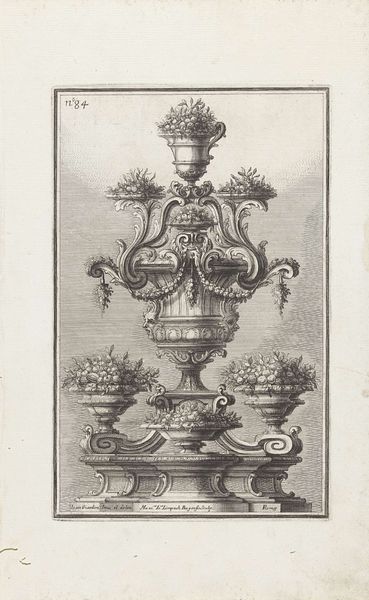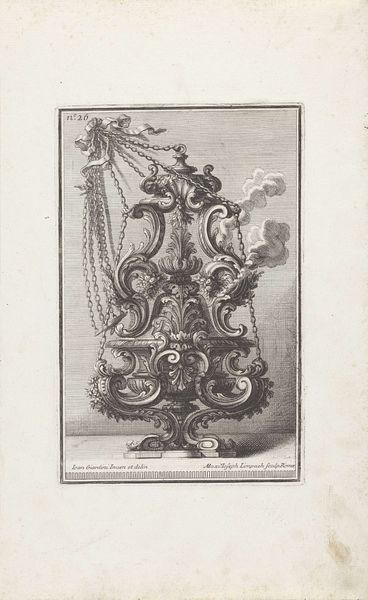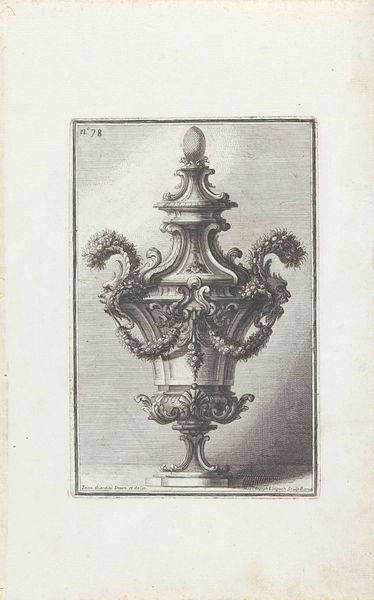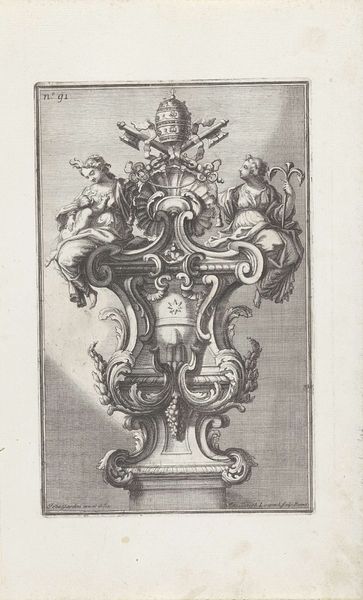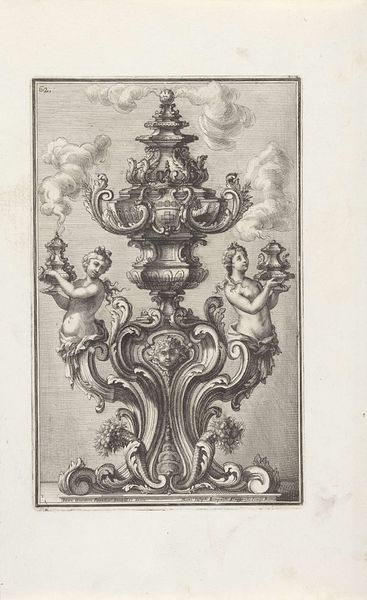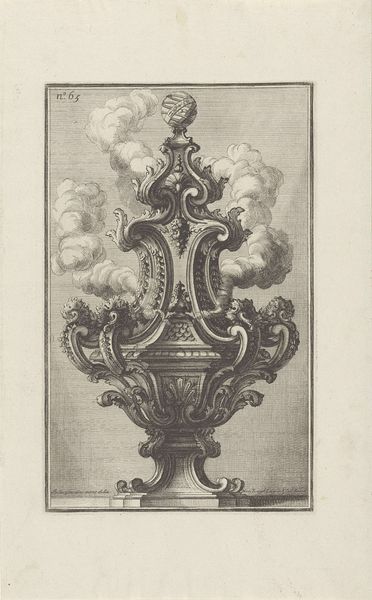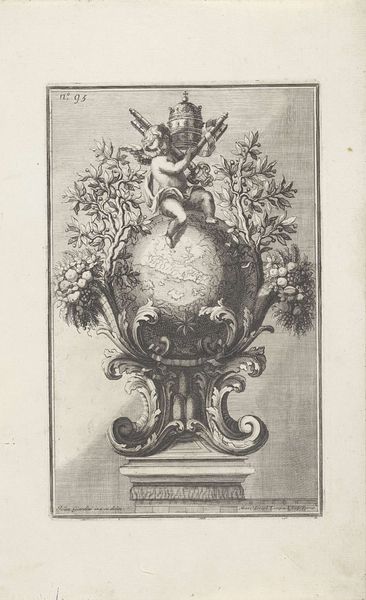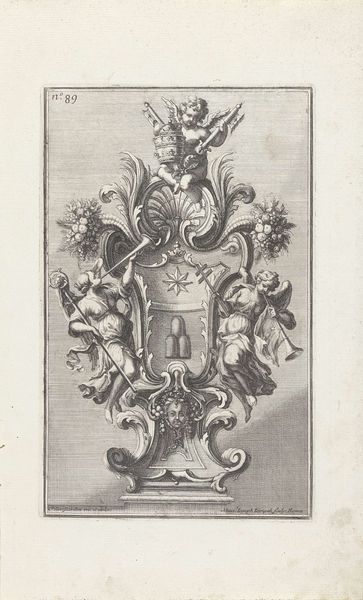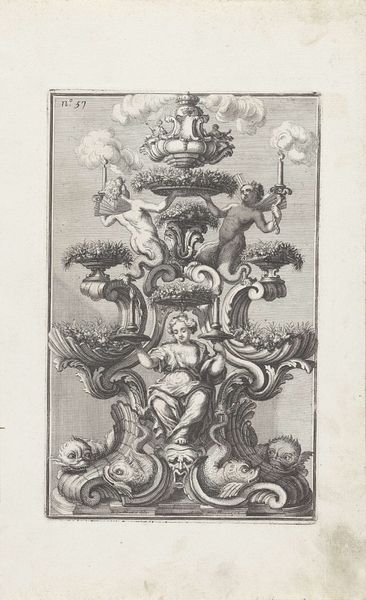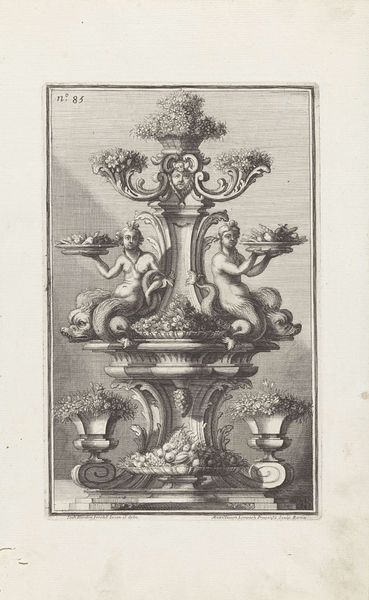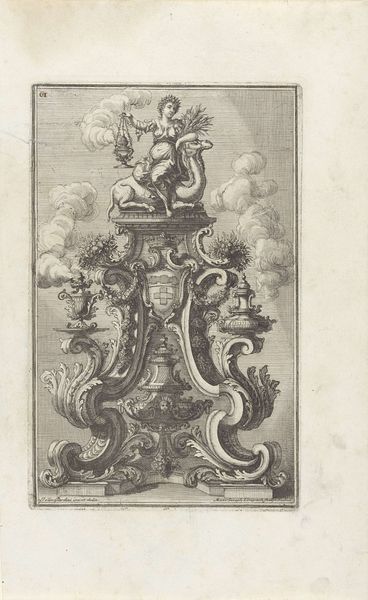
silver, print, metal, engraving
#
silver
#
baroque
# print
#
metal
#
old engraving style
#
line
#
decorative-art
#
engraving
Dimensions: height 240 mm, width 155 mm
Copyright: Rijks Museum: Open Domain
Editor: This is an engraving from 1714, titled "Wierookvat met pauselijk wapen en schaal met putti" by Maximilian Joseph Limpach. It features a silver incense burner with the papal coat of arms, alongside a dish decorated with putti. It seems like a highly stylized depiction of ritual objects, maybe used for religious ceremonies. What significance did objects like these hold within the social and political context of the time? Curator: The prominence of the papal coat of arms points towards the incredible influence and patronage of the Church during the Baroque period. These aren't merely decorative objects; they are powerful symbols representing the authority of the papacy, influencing culture through grand displays of wealth and faith. Consider how such imagery would be received, reinforcing power dynamics through artistry and elaborate religious practices. Who would have had access to these, and where would they be displayed? Editor: I guess these would probably be in churches and seen only by specific people, as demonstrations of religious might and reinforcing hierarchical systems within the church. Is there anything particularly notable about the design choices that amplify these meanings? Curator: Note the elaborate details and the use of silver – both conveying opulence. The putti, angelic children, contribute to the work's visual richness. Limpach’s choice of rendering these religious objects through engraving extends the audience; a print allows for dissemination, though still consumed by a specific class. How does the dissemination of this engraving play into the larger understanding and influence of religious and political power? Editor: That’s an interesting point; a wider audience certainly magnifies the intended influence, which means such visual statements can reach beyond the elite, though literacy would remain a barrier. Curator: Exactly. By understanding the socio-political factors, we understand that Limpach’s print, beyond just illustrating religious objects, reveals systems of power and influence. It really encourages us to reflect upon how imagery bolsters authority figures, and how these meanings are mediated through both form and distribution. Editor: This makes me look at the piece so differently. It’s not just an incense burner; it’s a cultural statement on power, expertly rendered and disseminated! Thanks!
Comments
No comments
Be the first to comment and join the conversation on the ultimate creative platform.
